New cars
2021 Convertibles with Reasonable Prices
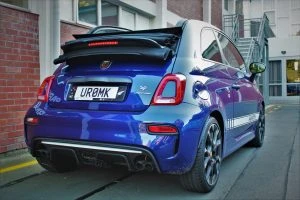
Abarth 595 Convertible
Very cute and not too expensive, the Abarth 595 Convertible has stacks of style and plenty of road presence even though it happens to come in rather small packaging. The Competizione is the more expensive (around $36k) of the two models available but offers more features and more grunt. You have FWD and the weight of the car is only a little over 1000 kg, so the driving experience is dynamic and loads of fun. The 1.4-litre Turbo unleaded petrol engine offers 132 kW and 250 Nm in the Competizione (0-100 km/h in less than 7 seconds, top speed 220k m/h) and 107 kW and 206 Nm in the standard version. Fuel economy sits on average at around 6-to-6.5 litres/100 km. With a 3-year 150,000 km warranty and 3 years roadside assist you are well covered. Expect to pay from around $35k for the base model and $41 k for the Competizione.
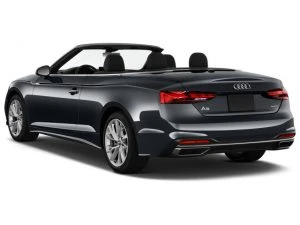
Audi A5 40 TFSI S line
It costs around $96k new, but Audi’s A5 Convertible is top quality and superb to drive. Gorgeous interiors, excellent comfort and technology make this AWD Audi Convertible a very nice ownership prospect. There are two 2.0-litre petrol engines: A very economical mild-hybrid (6.5 litres/100 km) 140 kW/320 Nm version for those who like FWD (0-100 km/h in around 7 seconds), and a smooth and powerful 183 kW/370 Nm version with AWD (0-100 km/h in around 6.5 seconds). Both engines are linked to Audi’s efficient seven-speed S tronic dual-clutch automatic gearbox. To be honest, the AWD version is only a few grand more at a bit over $100k, so I’d be looking to get into this one. Both versions should return between 6 and 7 litres/100km. A 3 year unlimited km warranty is good, as too the 3 year roadside assist package.
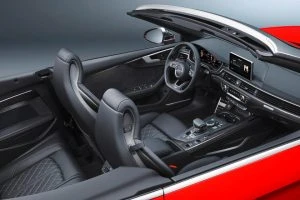
Audi S5 Convertible
Like the Audi A5 convertibles above, the S5 has all the goodies, gorgeous lines and comfortable interiors with all the modern gadgets. The S5 has the awesome 3.0-litre turbo V6 Petrol delivering a potent 260 kW of power and 500 Nm of torque to the AWD system, and it uses an eight-speed Tiptronic transmission. You can scamper from a standstill to 100 km/h in around 5 seconds, while the top speed is limited to 250 km/h. A 3 year unlimited km warranty is good, as too the 3 year roadside assist package. Expect to pay around $135k for a new one of these.
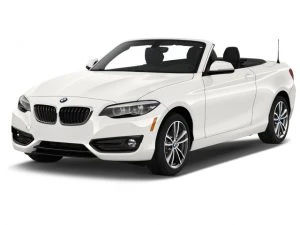
BMW 2 Series Convertible
The BMW 220i Luxury Line and 220i M Sport convertibles use the same 2.0-litre Turbo powerplant with 135 kW of power and 270 Nm of torque. The eight speed sport automatic does a great job of providing quick gear changes while linking the smooth operative action to the optimum power levels. This engine should offer a combined fuel consumption of around 6.5 litres/100 km. The car rides nicely. Those wanting the best in comfort and equipment will go for the Luxury Line, while the M Sport concentrates the suspension more towards sport and the flavour a bit racier. BMW The 220i M Sport uses the performance 3.0-litre Turbo engine with 250 kW of power and 500 Nm of torque. This is a quick car and you can expect a run through the 0-100 dash to take less than 6 seconds. The car’s top speed is limited to 250 km/h, while average fuel consumption will be around 8 litres/100 km. All BMW 2 Series convertibles are RWD and offer premium quality interiors and technology. Prices start at around $65k for the Luxury Line, $68k for the M Sport 2.0-litre and $92k for the 3.0-litre M Sport.
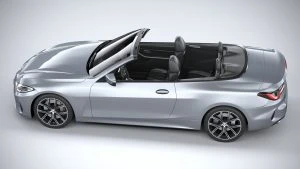
BMW 4 Series Convertible
This is one of the prettiest convertibles available for 2021. The new BMW 4 Series Convertible is offered with a 2.0-litre turbo-petrol four-cylinder producing either 135 kW/300 Nm (420i, around $90k) or 190 kW/400 Nm (430i, around $108k); while the flagship M440i xDrive AWD (around $136k) variant uses a mild-hybrid 3.0-litre inline turbo-six that unleashes 285 kW/500 Nm and is capable of reaching 100km/h in 4.5 seconds. A 3 year unlimited km warranty along with 3 year roadside assist makes life easy. All are well equipped, comfortable and stylish cars.

BMW Z4 Convertible
Another gorgeous looking convertible is the latest Z4 two-seater Convertible Roadster, which has a lower centre of gravity than before and is further helped dynamically by a 50-50 weight distribution. Three engines are available: The BMW Z4 sDrive 20i M Sport has the 145 kW/320 Nm 2.0-litre; the BMW Z4 sDrive 30i M Sport uses the 190 kW/400 Nm upgraded 2.0-litre version; the BMW Z4 40i offers 250 kW and 500 Nm with its 3.0-litre turbo in-line six petrol. Prices are around $98k, $122k and $144k, respectively. Even the 145 kW engine sings sweetly and packs a punch. All handle beautifully, making this the best Z4, yet. This has to be one of the best looking Roadsters on the road, and they are delightful to drive. The Z4 40i can dispatch the 0-100 km/h dash in just 4 seconds. A 3 year unlimited km warranty along with 3 year roadside assist is available to new car buyers.
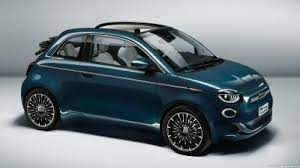
Fiat 500C
For somewhere between $25k and 28k, you could get yourself into a brand new Fiat 500 Convertible. They boast a 5-star ANCAP safety rating for what is a very cute, small car. In case you weren’t aware, the Abarth models, mentioned above, are the performance based versions of the Fiat 500C. You should average even less than 5 litres/100 km at times, and the 1.2-litre ULP motors are free revving, fun and relatively refined. Weighing in at just 935 kg these have a bit of zip about town and will happily hold their own at the legal open road limit. Both the 500C Club and 500C Lounge are well kitted out with modern technology and practicality, so life with a small 500C brings plenty of smiles. A 3 year 150,000 km warranty and 3 year roadside assist is good piece of mind motoring.
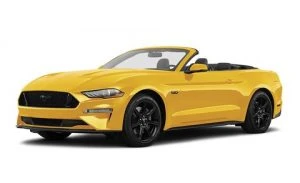
Mustang Convertible
Here would be the coolest convertible on the market. The Mustang’s muscle, sound and power delivery is nothing short of amazing. The GT version (0-100 km/h in around 4.5 seconds) costs around $75k new and boasts a 339 kW/556 Nm 5.0-litre V8. It can be had with either the standard six-speed manual, or the optional 10-speed auto gearbox. For around $61k, the Mustang High Performance 2.3-litre four-cylinder still delivers on performance (0-100 km/h in around 5.5 seconds) and has 236 kW of power and 448 Nm of torque to play with. Manual and auto versions are also available for the 2.3 High Performance. Both versions are RWD and are immensely rewarding to drive with the top up or down. These are hard to beat for value, performance and road presence. You can’t argue with the 5 year/unlimited km warranty, either.
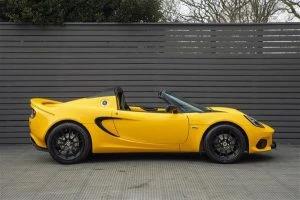
Lotus Elise
Here is another very cool convertible. The strikingly stylish Lotus Elise Convertible offers two models for 2021. The Sport 220 offers a 1.8 litre, 162 kW, 250 Nm ULP engine with RWD and a six-speed manual gearbox. A 0-100 km/h sprint for this version takes around 4.9 seconds. The Lotus Elise Cup 250 offers a 1.8 litre, 183 kW, 250 Nm ULP engine with RWD and a six-speed manual gearbox. A 0-100 km/h sprint for this version takes around 4.7 seconds. Few other convertibles cars can keep up with a Lotus Elise around a tight track as they are so light, agile and fast. A 3 year unlimited km warranty links with a 3 year roadside assist package when you buy a new one of these, which will be a little north of $100k.
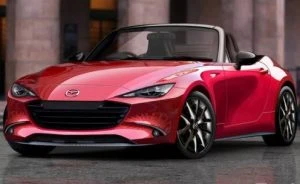
Mazda MX-5
There are two engines available: The 97 kW/152 Nm 1.5-litre and the 135 kW/205 Nm 2.0-litre, both offering the choice of six-speed manual or automatic transmission and RWD. A limited-slip differential and a finely-tuned suspension ensure a superbly balanced and grippy chassis with plenty of fun in the sun a certainty. Expect to pay between $40 and $52k depending on the model and trim. Enjoy! This has become a roadster icon over the years, and the latest model looks sharp and is kitted with all the latest safety gear.
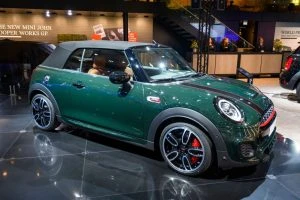
Mini Convertible
You’re paying anywhere around $50k-and-$75k for a new Mini Convertible – it all depends on the model. They can be had with various engines and styles. Three-door models include the base 100 kW/220 Nm 1.5-litre three-cylinder Cooper, the 141 kW/280 Nm four-cylinder Cooper S, and the mighty 225 kW/450 Nm JCW. Always cool and always impressively well-built, Mini’s are a classic. JCW versions are insanely fast and capable, and all come with 3 year/unlimited km warranty and a 3 year roadside assist package.
You could also look at some other marques like Porsche, Jaguar, Mercedes Benz or Lexus when it comes to buying a new convertible but you’ll be paying well north of $100, $200k or even $300k for some of these. Aston Martin, Bentley, Ferrari, Lamborghini, McLaren and Rolls Royce also offer convertible options in Australia, however their prices are for those loaded with money.
The Modern-Day Guide to Servicing Your New Car
Even for experienced car owners, or motorheads, car servicing can be an uncertain and difficult minefield to navigate. From capped-price servicing, to decisions on what parts to use and where to take the vehicle, or even the frequency with which your vehicle enters the garage – there are no shortage of decisions to consider.
First things first, servicing should be considered for what it really is – preventative maintenance. The purpose is to keep your car in good shape and identify any potential issues before they become a concern. As such, the key is to keep on top of your service schedule and book your car in regularly as per its recommended service intervals.

How often should I service my car?
An unfortunate habit that many motorists have gotten used to is waiting for a problem to arise and then taking their vehicle in for repairs as well as general servicing.
The problem with this approach is, not only does preventative maintenance potentially help prevent an issue in the first place, but it can save you considerable money.
With that said, the latest cars are beginning to incorporate a slightly different approach to servicing. Whereas it was once necessary to take your car in for service every 6 months or 10,000 km, an increasing number of manufacturers are drawing service intervals out to as much as 12 months or 15-20,000km. In fact, some car-makers like Renault are quoting a service interval as high as 30,000km!
Of course, not every manufacturer feels the same way, with Mazda sticking to its recommendation of 10,000km based on the mileage its customer base clocks up each year, which certainly seems a little on the lower side of distances covered.
In the meantime, if you’re driving one of the latest cars on the market, you can probably rest easy knowing that your service probably isn’t required as often as some of your past vehicles, even if certain manufacturers are pushing otherwise.

Should I go to a dealer for servicing?
Another thing you may want to consider is servicing your vehicle through an independent mechanic.
Motorists often feel as though they are obliged to take their vehicle to a dealership for servicing, or they will void their warranty. This is not quite true. If your car is affected by a warranty issue, the independent mechanic will refer you back to your dealer for the manufacturer to subsidise the work.
Outside of the above, independent mechanics can offer very competitive prices, particularly if they utilise aftermarket, rebuilt or reconditioned parts. They also now have access to greater data from manufacturers, making their jobs easier and repair costs more affordable.
Transparency into the servicing process has also become a growing theme.
Whereas previously a motorist would be flying blind with regards to the prices they would receive, servicing has become a little more structured. Drivers now have access to dealers who offer fixed or capped-price servicing programs, where motorists are provided with a price ceiling for their service, usually for a certain amount of years.
As always, however, motorists need to pay attention to inclusions and exclusions, the eligible timeframe, the frequency of the service, as well as any other terms and conditions. It is an option mostly worth considering for owners of up-marker or premium brands where servicing costs can add up pretty quickly.
Finally, the other matter that has become more prominent is menu-based servicing. This details the specific components and labour included in your vehicle’s service and their respective cost(s). Effectively, it is an itemised breakdown. When referenced with prices for individual parts, this type of summation provides some insight to understand the margins your mechanic is charging.
It goes without saying that motorists have considerably greater scope to shop around and compare their service costs between service providers, or for varying makes of cars.
With that said, motorists shouldn’t confuse price differences between different car manufacturers as being attributable to the mechanic or dealership. After all, there are a multitude of vehicle-related factors which play their part, not least of which concerns things like availability of parts and the frequency of servicing.
A Class-C Update From Mercedes.
Mercedes-Benz have updated their evergreen C-Class saloon and Estate with what Gordon Wagener, the chief design officer of the Daimler group said reflected the desire to apply “sensual purity”. It’s due for release in the northern hemisphere’s summer season.
The new C-Class will feature both forms of hybrid tech, being petrol and PHEV, and will run 48V technology. The battery alone will power the C-Class for up to 100 kilometres, the company says. The petrol engines will be four cylinders from what M-B call FAME (Family of Modular Engines). Along with turbocharging both the petrol and diesel engines the C-Class will have, M-B add in an ISG or integrated starter-generator. This provides low speed assistance using a 48 volt on-board electrical system that ensures functions such as gliding, boosting or energy recovery. Fast re-engagement has seamless switching from off to on when at lights or a stop sign.
Two engines with petrol will be available, one of 1.5L, the other of 2.0L. 125kW/250Nm for the C180, 150kW/300Nm for the C200 and C200 4MATIC from the 1.5L, with 190kW/400Nm for the C300 and C300 3MATIC versions. A pair of 2.0L diesels factor in, with 147kW/440Nm and 195kW/550Nm. Top speeds are limited at the upper end of the range to 250kph.
The plug-in hybrid C-Class will operate in all-electric mode in many cases thanks to an electric output of 95 kW (129 hp) and an all-electric range of around 100 kilometres. For many areas in Europe this could mean little to no ICE (Internal Combustion Engine) usage. The battery is an in-house design and built in a “pouch configuration” with 96 cells, with a total capacity of 25.4kWh. There is an internal cooling system fitted, managing heat discharge in any driving environment. The high density structure allows a charge rate of 30 minutes to full from empty using a 55kW charger. An 11kW charger is standard.
Energy recovery rates can be driver controlled via rocker switches in the console across all driving modes except for Sport. Lifting the foot from the accelerator has the regenerative system act like brakes, slowing the C-Class whilst simultaneously feeding back energy to the battery. Mercedes-Benz have engineered in two additional driving modes which will enable the driver to take advantage of what the powertrain offers: BATTERY HOLD: Maintaining the charge state of the high-voltage battery is given priority, e.g. when intending to drive in a city centre or green zone later on; selection of the most suitable drive configuration by the hybrid powertrain system, depending on the driving situation and route, and ELECTRIC: Electric driving up to 140 km/h, adjustable energy recovery rate in overrun mode, adaptation of Active Distance Assist DISTRONIC for electric driving, activation of the combustion engine using a pressure point of the accelerator pedal (kick-down).
Extra tech sees optional rear-axle steering with 2.5 degrees of angle reducing a turning circle to 10.5 metres. These have the rear wheels in an opposite direction in steering at speeds up to 60kph, then align with the direct front steering above 60kph. The rear steering also effectively reduces the steering ratio to 2.1 turns lock to lock, down from 2.35.
Notable changes to both the saloon and wagon have seen increase to the overall dimensions. The previous model saloon jumps from 4,686mm to 4,751mm in length, the Estate from 4,702mm to 4,751mm. Width is up by 10mm and 20mm respectively to 1,820mm each. Both share an increased wheelbase of 2,865mm, up from 2,840mm each. Luggage capacity for the Estate ranges from 490L to 1,510L, with a slightly lower load lip, and the rears eats have a 40/20/40 split for extra versatility. A powered tailgate is standard across the range.
Australian delivery dates are yet to be confirmed.
Japan’s Automotive Brilliance

Tokyo, Japan
You can’t go anywhere around Australia without noticing just how many Japanese made vehicles are motoring around our roads (and off them). Since the 1960s, Japan has been among the top 3 automotive manufacturers in the world. The country is home to a number of motor companies, and you’ll be familiar with them: Toyota, Honda, Nissan, Mitsubishi, Suzuki, Subaru, Isuzu. There are, of course, more than these mainstream manufacturers. Japan has around 78 car-manufacturing factories in 22 regions, and these employ over 5.5 million people (more than the entire population of New Zealand).
The strong competition that is happening on a global scale in the automotive industry has forced the manufacturers to come up with a new model design every four to five years. Along with the new models, new innovative designs and new technologies are presented and used by the automakers in their new vehicles. Automotive manufacturing is the prominent manufacturing type in Japan, which takes up 89% of the country’s manufacturing sector. A large amount of time and money are invested into developing and improving the automotive manufacturing process, which, in turn, increases the quality and efficiency of their manufactured automotive products.
Some of the brilliant new developments from Japan automobile manufacturers have led to distinct and innovative new designs for current and future automobiles. In order to control the market dependency on fuels, and in order to design vehicles that are more fuel-efficient, Japanese automakers have invested and built hybrid vehicles and fuel-cell vehicles.
The ideology and popularity of environmentally friendly vehicles is creating a wave of global interest and demand for these sorts of vehicles. More and more automakers around the globe are focusing on creating the types of vehicles that are friendlier on the environment to their production line. Japan’s automotive manufacturers are leaders in this field. Japanese innovations in these technology sectors include autonomous taxi services and airport transportation, high-definition maps and open-source software modules for autonomous vehicles, advanced hydrogen fuel cell and alternating-current battery technology, and silicon carbide (SiC) semiconductor films for EV power electronics. Japanese companies have been developing hydrogen fuel cell technology, which is projected to reach a market size of approximately $43 billion by 2026, growing at a CAGR of 66.9% from 2019 to 2026. Japan’s prowess in creating autonomous vehicles and their resulting cutting edge safety features puts them well ahead of the game.
An electric vehicle is an automobile that produces power from electrical energy stored in batteries instead of from the burning of fossil fuels. Top automakers such as Toyota, Honda, and Nissan are already class leaders.
Hybrid vehicles use two or more distinct power sources to move the car. Typically, electric motors combine with traditional internal combustion engines to produce power. Hybrid vehicles are highly fuel efficient. Again, Japan’s Toyota motor company is one of the automotive industry leaders in hybrid vehicle research and production – with the Toyota Prius model leading the way. Hybrid variants are available on many of Toyota’s collection of new vehicles.
A Fuel Cell Vehicle is equipped with a “Fuel Cell” in which electricity is generated through the chemical reaction between hydrogen and oxygen. This chemical reaction provides the source of power to the motor. Fuel cell systems operate by compressing hydrogen made from natural gas and gasoline, which is then converted to hydrogen by on-board systems. Toyota’s latest fuel cell vehicle, the Mirai II, is sold in Japan. The Mirai II uses a Hydrogen Electrochemical fuel cell that creates 130 kW. The electric motor that is powered by the fuel cell produces 136 kW and 300 Nm. It’s very stylish, too.
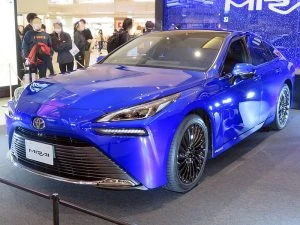
Toyota Mirai II


